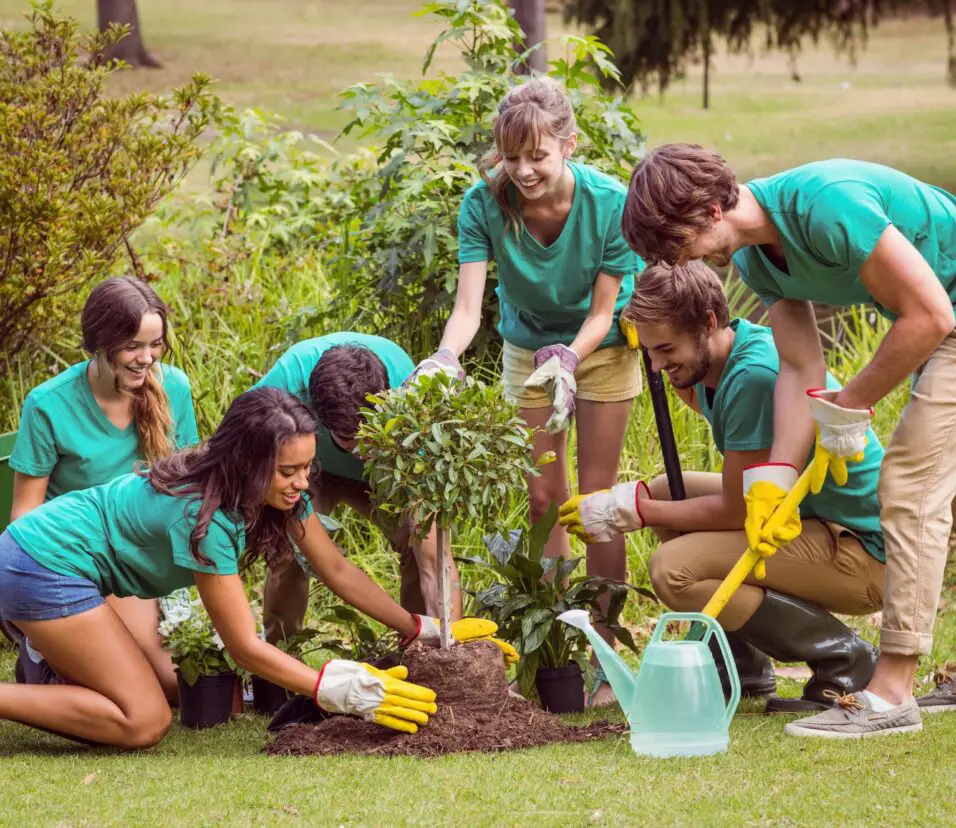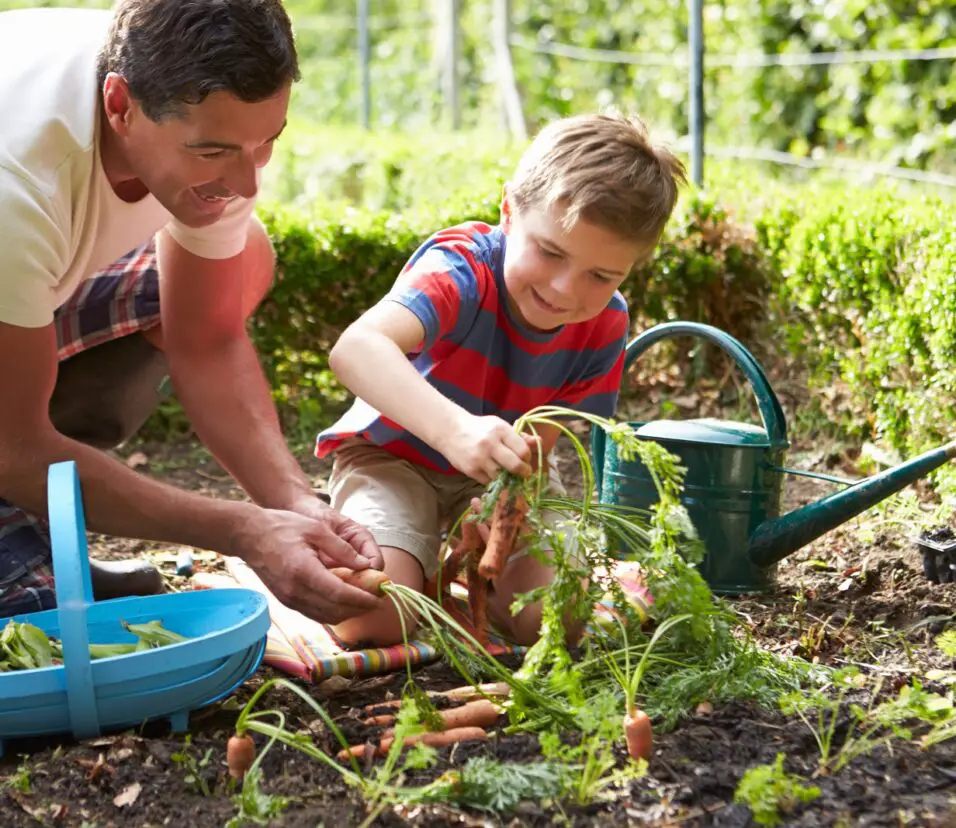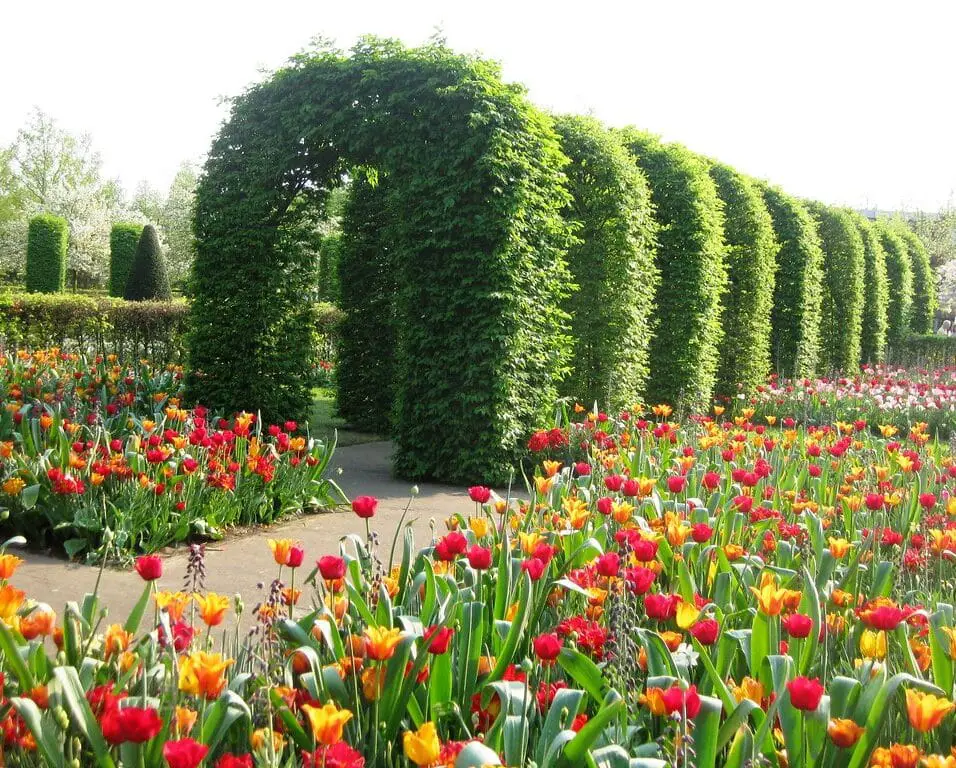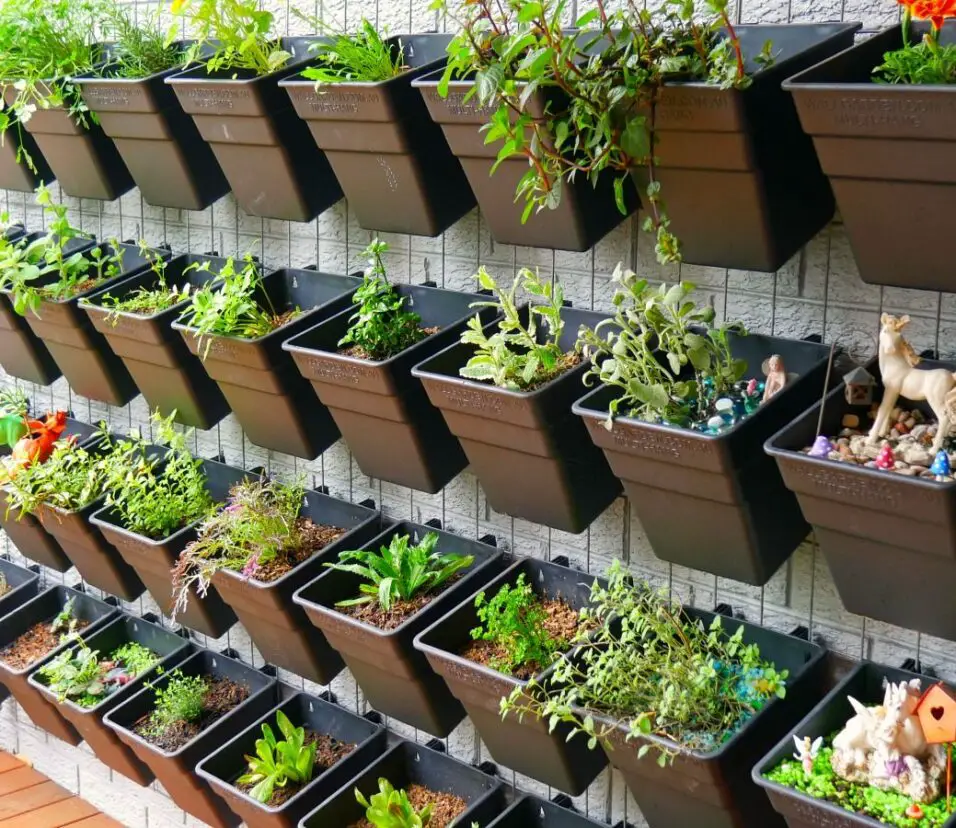What Is Potash Used For In Gardening
Introduction
Potash promotes strong plant development and agricultural yield. It made from minerals like potassium chloride or sulfate, provides soluble potassium, a vital ingredient for plant physiological activities.
Potash fertilizers strengthen roots, improve disease resistance, and boost water retention in gardens. It regulates water and nutrient intake, promoting photosynthesis and carbohydrate synthesis. Potash also improves soil structure, cation exchange capacity, and pH, creating an ideal environment for plant growth.
Gardening enthusiasts and professional horticulturists alike recognize potash’s significance in fostering vibrant blooms, abundant fruits, and overall plant vigor. By supplementing the soil with this essential nutrient, gardeners make can harness its potential to transform their green spaces into thriving, lush landscapes. As we delve deeper, this article will explore the diverse applications of potash in gardening, shedding light on its mechanisms of action and best practices for its incorporation, thereby empowering cultivators to achieve bountiful and visually captivating gardens.

Which plants need potash?
Flowering and fruiting plants perform better and yield more with potash-rich fertilizer. Plant-specific fertilizers like rose and tomato fertilizer contain potash and other minerals.
Potassium-dependent plants need potash to flourish. These include several crops and ornamentals. Potash helps fruit-bearing plants including tomatoes, potatoes, and berry bushes. The nutrient promotes strong stems, robust roots, and tasty, high-quality fruits.
Potash helps leafy greens like spinach and lettuce synthesize proteins and enzymes needed for photosynthesis and plant health. Potash helps root crops like carrots and beets grow, taste, and store well.
Roses and flowering shrubs benefit from potash-rich soil. The nutrient helps plants develop beautiful blooms. Potash’s water intake regulation helps plants endure drought, making it useful in dry or semi-arid settings.
Many plants benefit from potash, but its use should be balanced and suited to soil and plant needs. To maximize potash’s gardening benefits, you must understand plant and soil needs.
How do you use potash for plants?
HOW TO USE –
- 3-4 Leaves come out use 1/2 teaspoon to 1-liter water every 15 days.
- when you will see blooming sign upto full bloom 1-2 teaspoon to 1 liter every 15 days.
- until Blooming complete or harvesting complete use 2/3 tsp to 1-litre water every 15 days.
Using potash effectively for plants involves strategic application methods to ensure optimal growth and development. One common approach is incorporating potash-rich fertilizers into the soil during planting or as a top-dressing during the growing season. This method ensures a gradual release of potassium, sustaining plants’ nutrient requirements over time. Before applying, it’s advisable to conduct a soil test to determine existing nutrient levels and tailor the potash application accordingly.
Another technique involves creating potash-rich liquid fertilizers through the process of leaching or dissolving potash in water. This liquid solution can be applied directly to the plant’s root zone or as a foliar spray, facilitating rapid absorption of potassium. However, caution should be exercised to avoid excessive application, which can lead to nutrient imbalances.
For potted plants, a controlled-release fertilizer containing potash can be mixed into the potting mix. This gradually supplies nutrients as the plant grows. Composted organic matter, like wood ash, can also serve as a natural source of potash, enriching the soil with potassium and other essential elements.
It’s important to follow recommended application rates based on plant type, growth stage, and soil conditions to prevent over-fertilization. Regular monitoring of plant health and adjustments to potash application, if necessary, are crucial for fostering robust growth, maximizing yield, and maintaining the overall well-being of plants in gardens and agricultural settings.
What plants don’t like potash?
Potash fertilizer increases the pH in soil, so it should not be used on acid loving plants such as hydrangea, azalea, and rhododendron. Excess potash can cause problems for plants that prefer acidic or balanced pH soils.
While potash is beneficial for many plants, there are certain types of plants that do not particularly favor high levels of potassium. Acid-loving plants, such as blueberries, azaleas, and rhododendrons, tend to prefer soils with lower pH levels and are generally less responsive to potash supplementation. Excessive potassium can interfere with their ability to uptake other essential nutrients like iron and manganese, leading to nutrient imbalances and diminished growth.
Additionally, some native plants and species adapted to specific soil conditions may not require significant amounts of potash. These plants have evolved to thrive in soils with naturally low potassium content, so introducing excessive potassium can disrupt their natural growth patterns and potentially harm them.
Plants grown in saline or highly alkaline soils might also be negatively affected by excessive potash application. High potassium levels can exacerbate the soil’s salinity or alkalinity, rendering it less suitable for plants that prefer more neutral conditions.
To avoid causing harm to these plant types, it’s crucial to understand the specific nutrient requirements and soil preferences of different plants. Conducting soil tests and researching individual plant species will help guide the appropriate use of potash in gardening and ensure that it benefits plants rather than causing adverse effects.
How do I know if my plants need potash?
Symptoms. Poor flowering and fruit set are a major result of a lack of potash, as is blotchy ripening of tomatoes. The leaves have yellow and/or purple tints and the margins turn brown and look burnt. Severe cases show as leaf spotting and scorch of foliage.
Determining if your plants need potash involves careful observation of their growth, appearance, and overall health. Visual cues and soil analysis can provide valuable insights.
1. Visual Signs: Look for signs of potassium deficiency, such as yellowing or browning of older leaves, leaf edges curling or turning scorched, and poor fruit development. Plants lacking potassium often exhibit stunted growth and diminished flowering.
2. Soil Testing: Conduct a soil test to assess potassium levels. Many gardening centers offer soil testing services or kits. Soil test results will indicate the current potassium content in the soil, helping you gauge whether supplementation is needed.
3. Plant Type and History: Research the specific potassium requirements of the plants you’re cultivating. Certain plants, like fruiting crops, generally have higher potassium demands than others.
4. Crop Rotation and Fertilizer History: If you’ve been practicing crop rotation or using fertilizers, consider the history of the field. Repeatedly growing high-potassium-demand crops without replenishing the nutrient can lead to depletion.
5. Consult Experts: Seek advice from local horticultural extension services or experienced gardeners who are familiar with the specific plants and soil conditions in your region.
6. Leaf Tissue Analysis: For precise measurements, consider a leaf tissue analysis, which examines the nutrient content of plant leaves. This method offers insights into whether plants are receiving adequate potassium.
By combining these approaches, you can determine whether your plants require additional potash and adjust your gardening practices accordingly, fostering healthier, more productive vegetation.
Can you explain the significance of potash as a source of soluble potassium for plants in a gardening context?
In gardening, potash’s significance as a source of soluble potassium lies at the core of its role in fostering robust plant growth and optimal development. Potassium, an essential macronutrient, plays a pivotal role in various physiological processes crucial for plant vitality. Potash, typically derived from potassium-rich minerals like potassium chloride or sulfate, provides a readily available form of potassium that plants can efficiently absorb.
Soluble potassium, derived from potash, regulates essential functions such as water movement within the plant, photosynthesis, enzyme activation, and carbohydrate synthesis. By ensuring balanced water uptake and osmotic regulation, soluble potassium helps plants better withstand stressors like drought and disease. It also enhances the structural integrity of cell walls, contributing to improved disease resistance and overall plant strength.
In a gardening context, potash’s role in fostering healthy root systems, robust foliage, and vibrant blooms is undeniable. Its impact extends beyond individual plants to the health of the entire garden ecosystem. By supplying plants with the soluble potassium found in potash, gardeners can ensure the provision of a fundamental nutrient that underpins numerous vital processes, ultimately resulting in thriving, visually captivating gardens and bountiful harvests.
How does potash enhance the root development and disease resistance of plants in gardening?
Potash, a valuable source of soluble potassium, significantly enhances both root development and disease resistance in gardening. Soluble potassium derived from potash is instrumental in promoting robust root systems through its role in osmotic regulation and water movement within plants. Adequate potassium levels encourage root cells to maintain turgor pressure, enabling roots to efficiently absorb water and essential nutrients from the soil. This results in stronger and deeper root networks that anchor plants securely and facilitate nutrient uptake.
Moreover, potash’s contribution to disease resistance is multifaceted. Potassium helps to fortify cell walls, making them less susceptible to penetration by pathogens. By enhancing the structural integrity of plant tissues, potash acts as a physical barrier against invading microbes. Additionally, soluble potassium influences enzymatic processes that trigger the synthesis of compounds involved in plant defense mechanisms. This includes the production of antimicrobial proteins and enzymes that actively combat pathogens, contributing to an overall enhanced immune response.
Incorporating potash into gardening practices fosters not only healthier root systems but also plants that are better equipped to ward off diseases. This dual benefit reinforces the vitality of plants, making them more resilient and capable of thriving in the face of various stressors that can compromise their growth and well-being.
Could you elaborate on the role of potash in improving soil structure and maintaining optimal pH levels for gardening?
Potash plays a significant role in enhancing soil structure and maintaining optimal pH levels, contributing to the overall health and productivity of gardening environments. Soluble potassium from potash contributes to improved soil aggregation, aiding in the creation of well-structured soil. It encourages the formation of stable soil aggregates, which enhance water infiltration, aeration, and root penetration. This improved soil structure promotes healthy root growth and provides a hospitable environment for beneficial soil organisms.
Furthermore, potash’s influence on pH balance is crucial for maintaining optimal conditions for plant nutrient availability. Potassium ions are capable of displacing hydrogen ions in the soil, mitigating soil acidity. By doing so, potash helps stabilize pH levels, preventing extreme acidity that can inhibit nutrient uptake and root growth. This is especially important for crops that thrive in slightly acidic to neutral pH conditions.
In essence, potash’s dual role in improving soil structure and pH balance ensures a fertile and hospitable medium for plant growth. This, in turn, maximizes the efficiency of nutrient uptake and utilization, creating an environment where plants can flourish and reach their full potential in gardening endeavors.
How can gardening enthusiasts effectively incorporate potash into their gardening practices to achieve vibrant blooms and higher crop yields?
Gardening enthusiasts can harness the benefits of potash to achieve vibrant blooms and higher crop yields through mindful and strategic incorporation into their gardening routines. Firstly, conducting a soil test to gauge existing nutrient levels, including potassium, provides crucial insights for tailored supplementation.
When selecting fertilizers, choosing those with a balanced N-P-K ratio that includes potassium-rich options (potash) is essential. Incorporating these fertilizers during soil preparation or as top-dressing during the growing season ensures a consistent supply of soluble potassium, enhancing flowering and yield.
For potted plants, blending controlled-release fertilizers with potash into the potting mix provides gradual nutrient release. Foliar applications of potassium-rich solutions can be beneficial, especially during the flowering and fruiting stages, directly supplying potassium to the plant’s vital parts.
Gardeners should avoid excessive potash application, as this can lead to nutrient imbalances and environmental issues. Regular monitoring of plants’ visual health, growth patterns, and potential nutrient deficiencies helps fine-tune potash usage.
By thoughtfully integrating potash into their gardening practices, enthusiasts can optimize the nutrient environment, fostering robust root systems, robust blooms, and enhanced yields that transform their garden spaces into vibrant, productive landscapes.

Conclusion
In the world of gardening, the role of potash emerges as a cornerstone in nurturing flourishing plant life. From enhancing root development and disease resistance to improving soil structure and maintaining optimal pH levels, potash stands as a versatile ally for gardeners seeking to cultivate thriving landscapes and bountiful harvests.
The soluble potassium found in potash acts as a catalyst for an array of physiological processes within plants. Its role in osmotic regulation, water movement, and nutrient uptake fortifies root systems, resulting in plants that anchor securely and absorb nutrients efficiently. Moreover, potash’s influence on plant immunity, by reinforcing cell walls and triggering defense mechanisms, strengthens plants’ resistance to various diseases.
Beyond its direct effects on plants, potash profoundly impacts soil quality. Its contribution to stable soil structure enhances water retention, aeration, and root penetration. This, coupled with its pH-regulating properties, creates an environment in which plants can thrive, optimizing nutrient availability and fostering healthier growth.
Gardening enthusiasts are empowered to utilize potash strategically, whether through balanced soil fertilizers, controlled-release formulations, or targeted foliar applications. By recognizing the nuances of plant needs, monitoring visual cues, and tailoring potash usage accordingly, gardeners can achieve the ultimate goals of gardening – vibrant blooms that captivate the eye and higher crop yields that satisfy the table. As potash intertwines with gardening practices, it nurtures not only plants but also the passion and satisfaction of those who tend to the earth.








